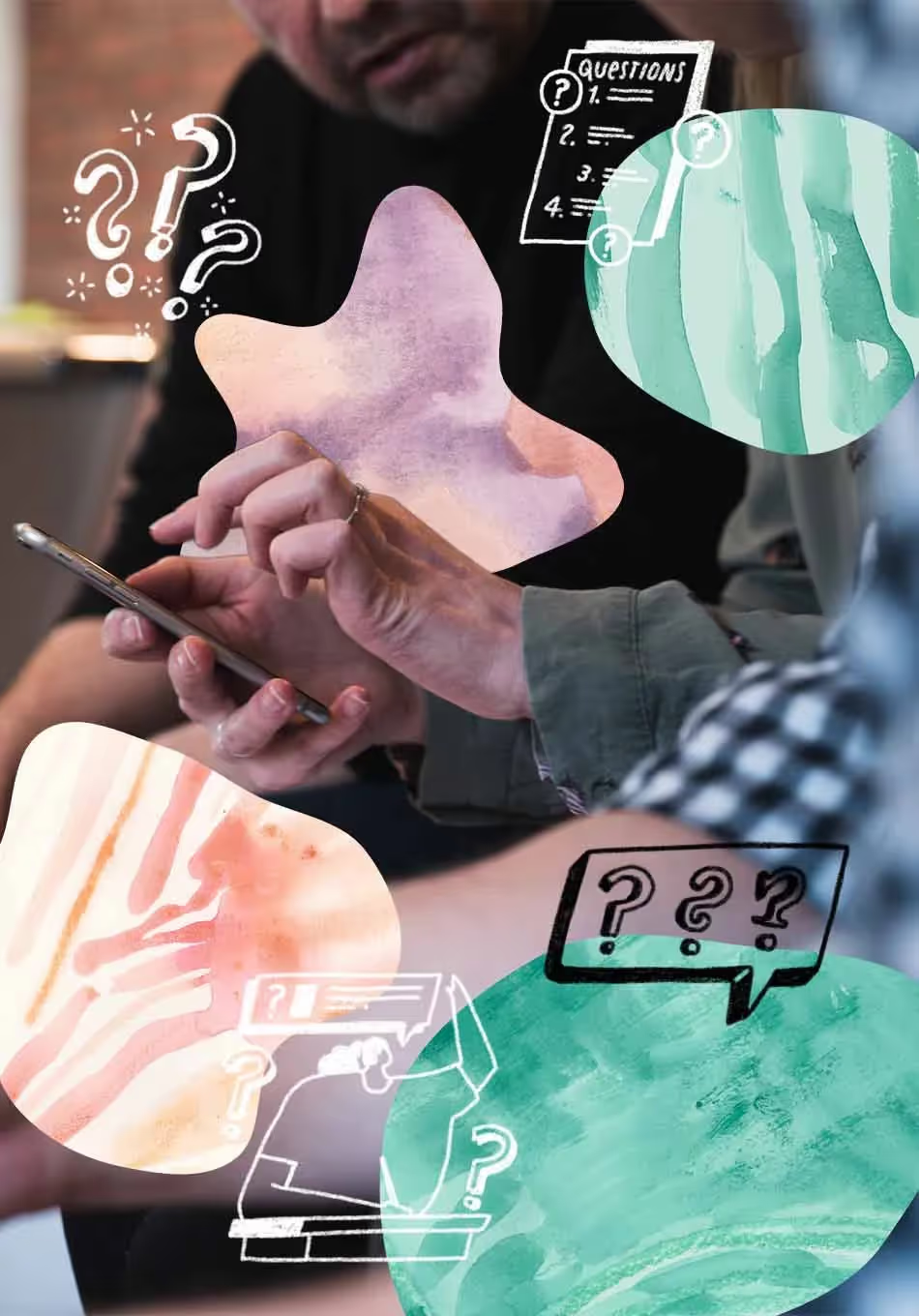Nobody creates a perfect website the first time around—which is why website redesigns are so common.
Your website needs to meet the needs of your users. That means it not only has to look great, but also provide an exceptional user experience. How do you achieve this? The answer starts with user research.
Beautiful graphics and slick interactions are great—but it is research that is the key to a successful website redesign.
Gather ‘round, Designers, Marketers, startup founders, and non-researchers with websites—this one's for you. In this article I will share my beginner-friendly, 4-step user research framework for website redesigns.
Let’s dive in.
Why is user research important for a website redesign?
User research is crucial in website redesign because it allows you to gain valuable insights into your target audience. By conducting user research, you can make informed decisions that will lead to a website that truly resonates with your audience and helps you achieve your business goals.
In a nutshell, UX research is an essential part of the redesign process because it helps you: i
- Identify user needs and pain points: User research helps you uncover the real problems your users face when interacting with your website. You can’t address pain points that you don’t know about.
- Make data-driven decisions: User research provides you with concrete evidence to inform your design decisions. Instead of relying on assumptions or personal preferences, you can make informed choices based on real user behavior and feedback.
- Improve website usability and conversion rates: A user-centered website design leads to improved usability, increased engagement, and ultimately, higher conversion rates.
- Align website design with business goals: User research can provide insights into the user behaviors that affect your bottom line.
New to this? Check out the UX Designer's Guide to User Research for tailored tips and advice.
My UX research framework for website redesigns
I recently helped a bakery revamp their website. They were struggling with low online sales and frustrated customers who couldn't find what they needed.
Phase 1 helped us define their target audience (busy parents and health-conscious young adults) and the problem (poor navigation and lack of product information). We set concrete goals: increase online orders by 30% and improve user satisfaction by 20%.
Phase 2 involved user interviews and usability testing, revealing users' frustration with the confusing menu and lack of product descriptions. We analyzed the data to identify recurring themes and prioritize the most critical issues.
Phase 3 focused on turning insights into action. We created user personas and brainstormed design ideas based on their needs. A key realization was the need for high-quality photos and concise product descriptions.
Phase 4 meant testing the redesigned website with real users. We iterated based on their feedback and launched a website that was clean, intuitive, and focused on user needs.
The results? Online orders exceeded our goal, jumping by 45%. Customer satisfaction soared to 92%. This project proved the power of combining a structured framework with deep user understanding.
To effectively conduct user research for a website redesign, try following this structured framework:
Step 1: Define Phase
Don't set sail without a compass! Define your destination. Embarking on a website redesign without a clear goal is like sailing aimlessly in the ocean. You might stumble upon something, but it's unlikely to be your desired landfall.

Before diving into redesign, clearly define the problem you want to solve. Is it poor navigation that leaves users lost and frustrated? Slow loading times that send them fleeing? Or an outdated design that fails to engage and convert?
By identifying these issues upfront, you can tailor your user research to address them directly, ensuring your redesign hits the mark. Remember, a problem well-stated is a problem half-solved.
There are various testing methods available, including A/B testing, usability testing, and surveys for example. Choose the method that best suits your goals and budget.
For this example, let’s use poor navigation (IA) as the problem. Say your users struggle to find the information they need due to confusing menus or a cluttered layout. You can define the problem by asking yourself questions such as: “What do you hope to achieve with your changes, and how will you measure success?”
Ensure that your testing participants are representative of your target audience. This will help you gather accurate and relevant feedback. (Note: for IA problems, card sorting and tree testing are often useful methods)
Phase 1 Checklist:
- Identify the goals of the redesign: Clearly articulate the objectives of your website redesign, such as improving user engagement, increasing conversions, or enhancing brand awareness.
- Define the target audience: Clearly define your target audience, including their demographics, interests, and online behaviors.
Phase 2: Discovery Phase
In the discovery phase, you will conduct usability tests to uncover navigation pain points. You can also analyze website performance to optimize loading times, and gather user feedback to inform a visually appealing redesign. This will help you uncover their struggles, motivations, and goals, providing you with a solid foundation for your website redesign.

Analyze the data collected in the discovery phase to identify patterns and trends. This step allows you to uncover recurring themes, behaviors, and preferences among your users. These patterns offer a roadmap for your website redesign, allowing you to make informed decisions based on concrete evidence rather than mere assumptions. Embrace the patterns, and you will pave the way for a website that resonates deeply with your target audience.
Remember that not all issues uncovered through user research data are created equal. Some may have a more significant impact on user experience than others. Unless you have the latitude for a complete, soup-to-nuts overall, you’ll probably need to prioritize the issues that require immediate attention. Again, this is why it is crucial to define the problem prior to conducting user research. Having a clear goal will help you focus your redesign on resolving the most critical pain points.Don't waste time and resources on minor issues when you can make a substantial difference elsewhere.
User research data provides you with the ammunition needed to convince stakeholders, colleagues, and clients of the necessity and effectiveness of your website redesign decisions.
Phase 2 Checklist:
- Conduct qualitative research: Use qualitative methods like user interviews, focus groups, and user observation to gain deep insights into user needs, motivations, and behaviors.
- Analyze website data: Analyze website analytics, user behavior data, and heatmaps to identify patterns, trends, and areas of improvement.
- Conduct competitive analysis: Evaluate your competitors' websites to understand their strengths, weaknesses, and best practices.
Phase 3: Interpretation Phase
The exploration or interpretation phase is a crucial step in the user research framework, as it involves analyzing and interpreting the gathered data to uncover valuable insights that will inform the design process.
As you synthesize your findings, you’ll start to identify recurring themes, patterns, and pain points that represent the common needs, challenges, and preferences of your target audience.
These insights will then guide the creation of user personas, which are detailed representations of specific user groups that help designers empathize with their needs and make informed design decisions. Additionally, the exploration phase encourages brainstorming and generating design ideas based on the user insights, allowing you to explore a range of potential solutions and pave the way for a user-centered website redesign.'

Phase 3 Checklist:
- Synthesize findings: Organize and analyze the gathered data to identify recurring themes, patterns, and pain points.
- Create user personas: Develop user personas to represent the different segments of your target audience, highlighting their needs, goals, and behaviors.
- Generate design ideas: Brainstorm and generate design ideas based on the insights gained from user research.
Phase 4: Validation Phase
Finally, in the validation phase, you will test your website prototypes with real users. As a designer, it is crucial to understand the significance of implementing changes based on user research findings. This iterative process allows you to gather feedback and make necessary adjustments before launching your redesigned website.
By involving your users in the design process, you can guarantee a user-centric website that will exceed their expectations.

Phase 4 Checklist:
- Conduct usability testing: Test your website prototypes with real users to identify usability issues and gather feedback on the proposed design solutions.
- Gather feedback on design ideas: Get feedback from stakeholders, colleagues, and potential users on the design ideas generated during the exploration phase.
- Refine and iterate: Based on the feedback gathered, refine your design solutions and iterate through multiple rounds of testing until you achieve a satisfactory user experience.
In conclusion
User research is a crucial (non-negotiable) component of website redesign, and following a framework can help ensure that the process is effective and efficient. Sure, it sounds like more work than simply launching a pretty new website and hoping for the best. But it is only defining the problem, conducting user research, analyzing data, making decisions, implementing changes, and testing that website owners can create a website that truly meets the needs of their users and achieves business goals.



%20(1).avif)















